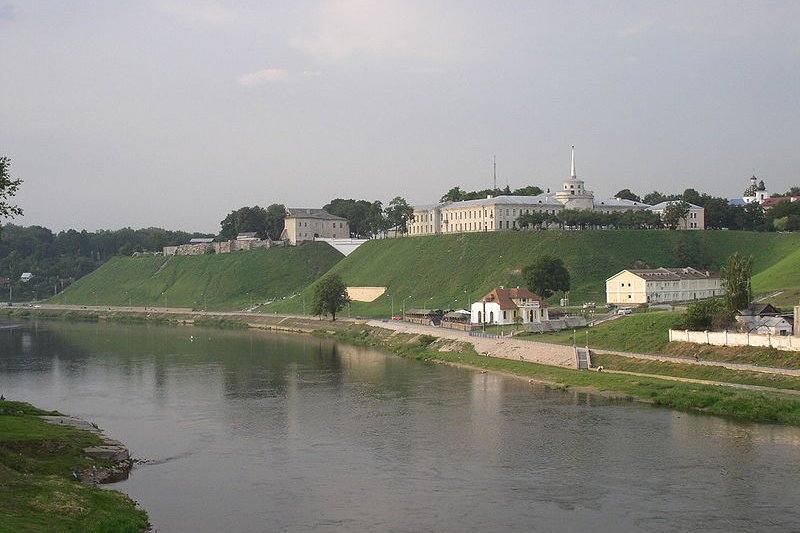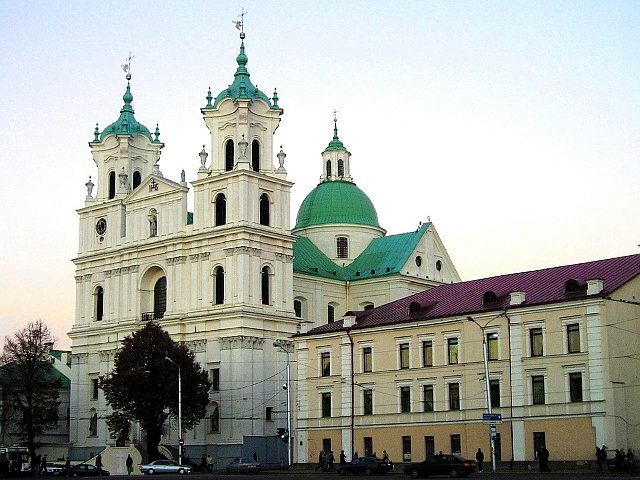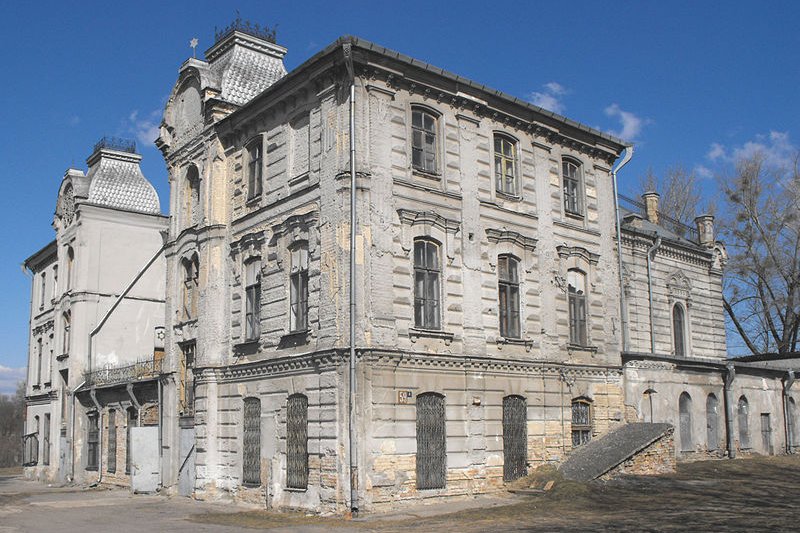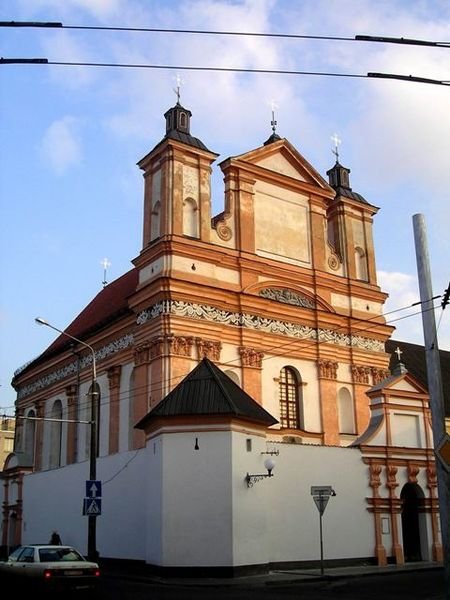 View of the New and Old Castles in Grodno, Belarus
View of the New and Old Castles in Grodno, BelarusSource: https://commons.wikimedia.org/wiki/File:Belarus-Hrodna-New_and_Old_Castles-3.jpg
Author: Alex Zelenko

Grodno (Belarusian: Гро́дна, Russian: Гродно, Lithuanian: Gardinas), often written as Hrodna, is a city in western Belarus, near the border with Poland and Lithuania. The city has a population of 330,000 people (2011 estimate) and serves as the capital of the eponymous district and region.
Grodno was founded as a small fortress around the 11th century by Rurikid princes. It was first mentioned in 1127, in the Primary Chronicle, where it appeared as Goroden. In the following centuries, it became part of the Grand Duchy of Lithuania and later the Polish-Lithuanian Commonwealth.
 The Cathedral of St Francis Xavier in Grodno, Belarus
The Cathedral of St Francis Xavier in Grodno, BelarusSource: https://commons.wikimedia.org/wiki/File:Grodno_plac.jpg
Author: Piotrus, Citypeek

When the Commonwealth for broken up in 1795, Grodno became part of the Russian Empire. It was here, in the Grodno New Castle, that the last king of Poland and grand duke of Lithuania, Stanisław August Poniatowski abdicated. Grodno was occupied by German forces in the First World War. After the war, it became part of Poland.
Grodno saw heavy fighting between Polish and Soviet forces during the Second World War. In the end the latter prevailed, resulting in Grodno being added to the Belarusian SSR within the Soviet Union, and thousands of Polish inhabitants of the city deported to remote areas of the Soviet Union. Until the war began, the city had a sizable number of Jews. The majority of them died in German concentration camps.
 Great Synagogue of Grodno
Great Synagogue of GrodnoSource: https://commons.wikimedia.org/wiki/File:Great_sinagoga_Grodno_1a.jpg
Author: Vadim Akopyan

Today Grodno has preserved its heritage and faith. It is a center for the Roman Catholic faith, due partly to the high number of Poles still living there. The Eastern Orthodox faith is also well represented.
Visiting Grodno
You can reach Grodno by taking a train from Minsk (5 hours), Moscow (16 hours) and St Petersburg (22 hours). Coming from the west, you can take a train to Bialystok in Poland, and then change trains to Kuznica, and from Kuznica to Grodno. Church of the Annunciation of the Virgin Mary, Grodno
Church of the Annunciation of the Virgin Mary, GrodnoSource: https://commons.wikimedia.org/wiki/File:Klasztor_brygitek.jpg
Author: Eupe

Sights & Attractions in Grodno
- Cathedral of St Francis Xavier
The most outstanding church in Grodno, this was formerly a Jesuit church until 1773. It was built in the high Baroque architectural style. - Church of the Bridgettine Convent
Officially called the Church of the Annunciation of the Virgin Mary, this church built in 1642 is one of the earliest Baroque buildings in the region. - Great Synagogue of Grodno
The main place of worship for the Jews of Grodno. - Grodno Orthodox Cathedral
A beautiful cathedral built in 1904 in the polychrome Russian Revival style. - Grodno TV Tower
A 254-meter-high tower for television broadcasts. - Kolozha Church of Sts Boris and Gleb
The oldest structure in Grodno still standing, and the only surviving example of Black Ruthenian architecture. - New Castle
Also called the New Hrodna Castle, this is the royal palace of the rulers of Poland and Lithuania. It was built in 1793, and is joined to the Old Grodno Castle by an arch bridge. - Old Grodno Castle
Castle dating to the 11th century, when it was the seat of the Black Ruthenian rulers. The royal court was located here until the Great Northern War, which inflicted heavy damage on the castle, forcing the royal court to relocate to the New Grodno Castle. - Stanisławów
Summer residence of the last Polish king.
 Latest updates on Penang Travel Tips
Latest updates on Penang Travel Tips
Songs about Penang
About this website

Hello and thanks for reading this page. My name is Timothy and my hobby is in describing places so that I can share the information with the general public. My website has become the go to site for a lot of people including students, teachers, journalists, etc. whenever they seek information on places, particularly those in Malaysia and Singapore. I have been doing this since 5 January 2003, for over twenty years already. You can read about me at Discover Timothy. By now I have compiled information on thousands of places, mostly in Peninsular Malaysia and Singapore, and I continue to add more almost every day. My goal is to describe every street in every town in Malaysia and Singapore.
Copyright © 2003-2024 Timothy Tye. All Rights Reserved.


 Go Back
Go Back